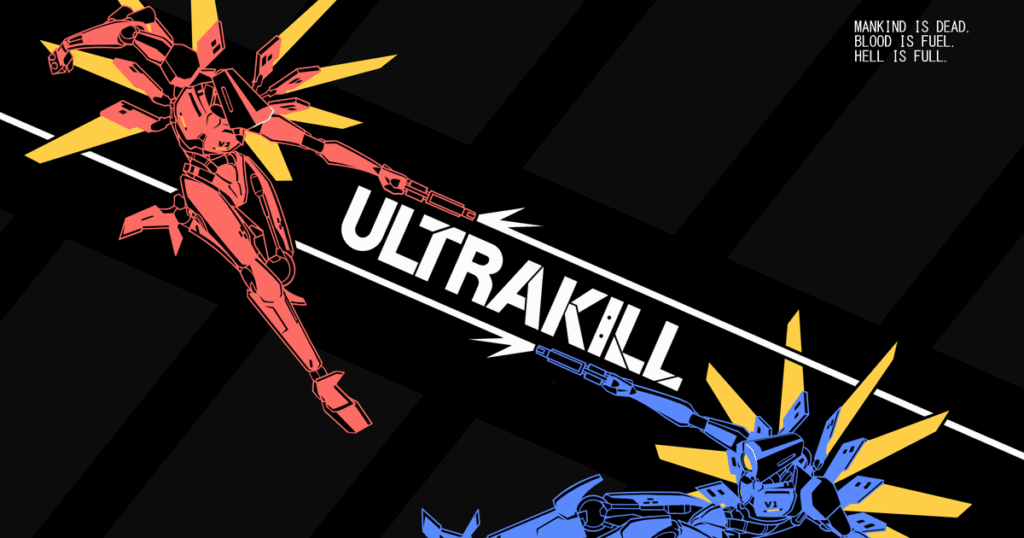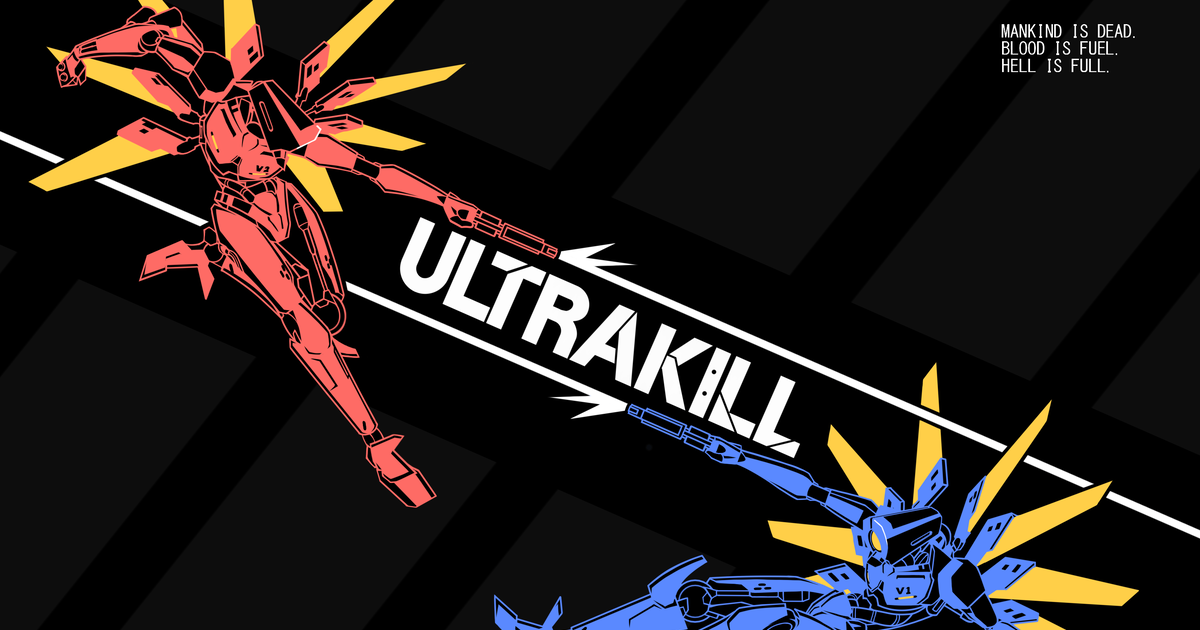
Ultraviolence and Ultrakill: Exploring the Aesthetics and Impact of Hyper-Violent Video Games
The gaming landscape is constantly evolving, pushing boundaries in terms of narrative, gameplay, and, perhaps most controversially, violence. Two titles that stand out in this regard are Ultrakill and the broader concept of ultraviolence in video games. This article delves into the aesthetics, design choices, and potential impact of such extreme depictions of violence, focusing on how Ultrakill exemplifies this trend.
Defining Ultraviolence in Gaming
Ultraviolence, as a term, goes beyond simple violence. It signifies a level of brutality that is exaggerated, stylized, and often presented in a way that is almost cartoonish or fantastical. It’s not just about killing enemies; it’s about the spectacle of it, the over-the-top gore, and the sheer intensity of the combat. Think dismemberment, explosions of blood, and environmental destruction – all amplified to eleven.
The appeal of ultraviolence is complex. For some, it’s a form of escapism, a way to release pent-up aggression in a safe and controlled environment. For others, it’s the thrill of the challenge, the satisfaction of mastering a difficult game that demands precision and skill even amidst the chaos. And for still others, it’s simply the aesthetic – the visual spectacle of destruction can be strangely compelling.
Ultrakill: A Case Study in Ultraviolence
Ultrakill, developed by Arsi “Hakita” Patala, is a prime example of a game that embraces ultraviolence. Inspired by classic arena shooters like Doom, Quake, and Devil May Cry, Ultrakill throws players into a fast-paced, blood-soaked world where the only objective is to survive and destroy. Players take on the role of a machine named V1, a being that sustains itself by drinking blood. This core mechanic drives the relentless combat, incentivizing players to constantly seek out and destroy enemies in increasingly creative and brutal ways.
Gameplay Mechanics and Ultraviolence
The gameplay of Ultrakill is intrinsically linked to its ultraviolence. The game encourages aggressive and stylish play, rewarding players for performing complex maneuvers and chaining together kills. For example, players can slide, dash, and wall-jump to maintain momentum, while also utilizing a variety of weapons, each with its own unique properties and methods of dealing damage. The shotgun, for instance, can be used to parry projectiles, while the revolver can be charged up for a powerful ricochet shot. Mastering these techniques is crucial for surviving the increasingly difficult waves of enemies.
The game’s health system further reinforces the emphasis on ultraviolence. V1 heals by absorbing blood from enemies, forcing players to constantly engage in combat. This creates a feedback loop where aggression is not only encouraged but essential for survival. The more violently you dispatch your foes, the more health you regain, allowing you to continue the carnage.
Aesthetic and Visual Design
The visual style of Ultrakill is another key component of its ultraviolence. The game features a deliberately low-poly aesthetic, reminiscent of early 3D games. This retro style, combined with the vibrant color palette and the over-the-top gore, creates a unique and memorable visual experience. The blood effects are particularly noteworthy, with enemies exploding in showers of pixels and leaving trails of crimson across the environment.
The sound design also contributes to the overall atmosphere of ultraviolence. The game features a heavy metal soundtrack that perfectly complements the fast-paced action. The sounds of gunfire, explosions, and screaming enemies are all amplified and distorted, creating a cacophony of violence that is both exhilarating and unsettling.
The Appeal of Ultraviolence: Why Do We Enjoy It?
The question of why we enjoy ultraviolence in video games is a complex one. There are several potential explanations, ranging from psychological to sociological.
- Catharsis: Some argue that ultraviolence provides a cathartic release, allowing players to vent their frustrations and anxieties in a safe and controlled environment. By engaging in simulated violence, players can experience a sense of release without causing harm in the real world.
- Mastery and Skill: Games like Ultrakill often require a high level of skill and precision. The satisfaction of mastering the game’s mechanics and overcoming challenging encounters can be a powerful motivator. The ultraviolence becomes a byproduct of this mastery, a visual representation of the player’s skill.
- Aesthetic Appreciation: For some, the appeal of ultraviolence lies in its aesthetic qualities. The stylized gore, the over-the-top animations, and the sheer spectacle of destruction can be visually compelling. It’s similar to the appeal of action movies, where the violence is often exaggerated and stylized for entertainment purposes.
- Escapism: Video games offer a form of escapism, allowing players to immerse themselves in fantastical worlds and experience things that they would never be able to in real life. Ultraviolence can be part of this escapist fantasy, allowing players to explore the darker aspects of human nature without facing real-world consequences.
The Potential Downsides: Is Ultraviolence Harmful?
While the appeal of ultraviolence is undeniable, it’s also important to consider the potential downsides. The debate over the impact of violent video games on behavior has been ongoing for decades, with researchers offering varying perspectives.
Some studies have suggested a correlation between violent video game exposure and increased aggression, particularly in children and adolescents. However, other studies have found no such link, and some researchers argue that the effects of violent video games are minimal compared to other factors, such as family environment and socioeconomic status. [See also: Effects of Violent Video Games on Children]
It’s also important to distinguish between correlation and causation. Even if there is a correlation between violent video game exposure and aggression, it doesn’t necessarily mean that the games are causing the aggression. It’s possible that individuals who are already prone to aggression are more likely to be drawn to violent video games.
Furthermore, the context in which the ultraviolence is presented matters. Games like Ultrakill often present violence in a stylized and fantastical way, making it clear that it is not meant to be taken seriously. This can help to distance players from the real-world implications of violence. However, games that depict realistic violence, particularly against vulnerable populations, may be more likely to have a negative impact.
Ultraviolence and Artistic Expression
Despite the potential concerns, it’s important to recognize that ultraviolence can also be a form of artistic expression. Games like Ultrakill often use violence to explore themes of power, control, and the consequences of unchecked aggression. The ultraviolence can be a way to provoke thought and challenge the player’s assumptions about morality and violence.
Furthermore, the creative use of ultraviolence can be a way for developers to push the boundaries of game design and create unique and memorable experiences. By experimenting with different ways of depicting violence, developers can create games that are both visually stunning and intellectually stimulating.
Ultimately, the question of whether ultraviolence is harmful or beneficial is a complex one with no easy answers. It depends on a variety of factors, including the individual player, the context in which the violence is presented, and the overall goals of the game. However, by engaging in open and honest discussions about the potential impacts of ultraviolence, we can help to ensure that video games continue to be a positive and enriching form of entertainment.
The Future of Ultraviolence in Gaming
As technology continues to evolve, we can expect to see even more sophisticated and realistic depictions of ultraviolence in video games. Virtual reality, in particular, has the potential to create incredibly immersive and visceral experiences. This raises important questions about the ethical implications of simulating violence in such a realistic way. [See also: The Ethics of Violence in Virtual Reality]
It’s also likely that we will see more games that use ultraviolence in innovative and creative ways. Developers may experiment with different visual styles, gameplay mechanics, and narrative structures to explore the themes and emotions associated with violence. The key will be to find ways to use ultraviolence in a way that is both entertaining and thought-provoking, without crossing the line into gratuitous or exploitative content.
Ultrakill stands as a testament to the possibilities of ultraviolence when handled with a clear artistic vision. The game’s success demonstrates that there is a market for games that embrace extreme violence, as long as it is done in a way that is both engaging and meaningful. As the gaming industry continues to evolve, it will be interesting to see how developers continue to push the boundaries of ultraviolence and explore its potential as a form of artistic expression.
In conclusion, ultraviolence, as seen in games like Ultrakill, represents a complex and often controversial aspect of video game design. While concerns about its potential impact on players remain, it also serves as a powerful tool for artistic expression, exploring themes of power, control, and the consequences of violence. The future of ultraviolence in gaming will likely depend on the industry’s ability to balance entertainment with ethical considerations, ensuring that these experiences remain engaging and meaningful for players.

